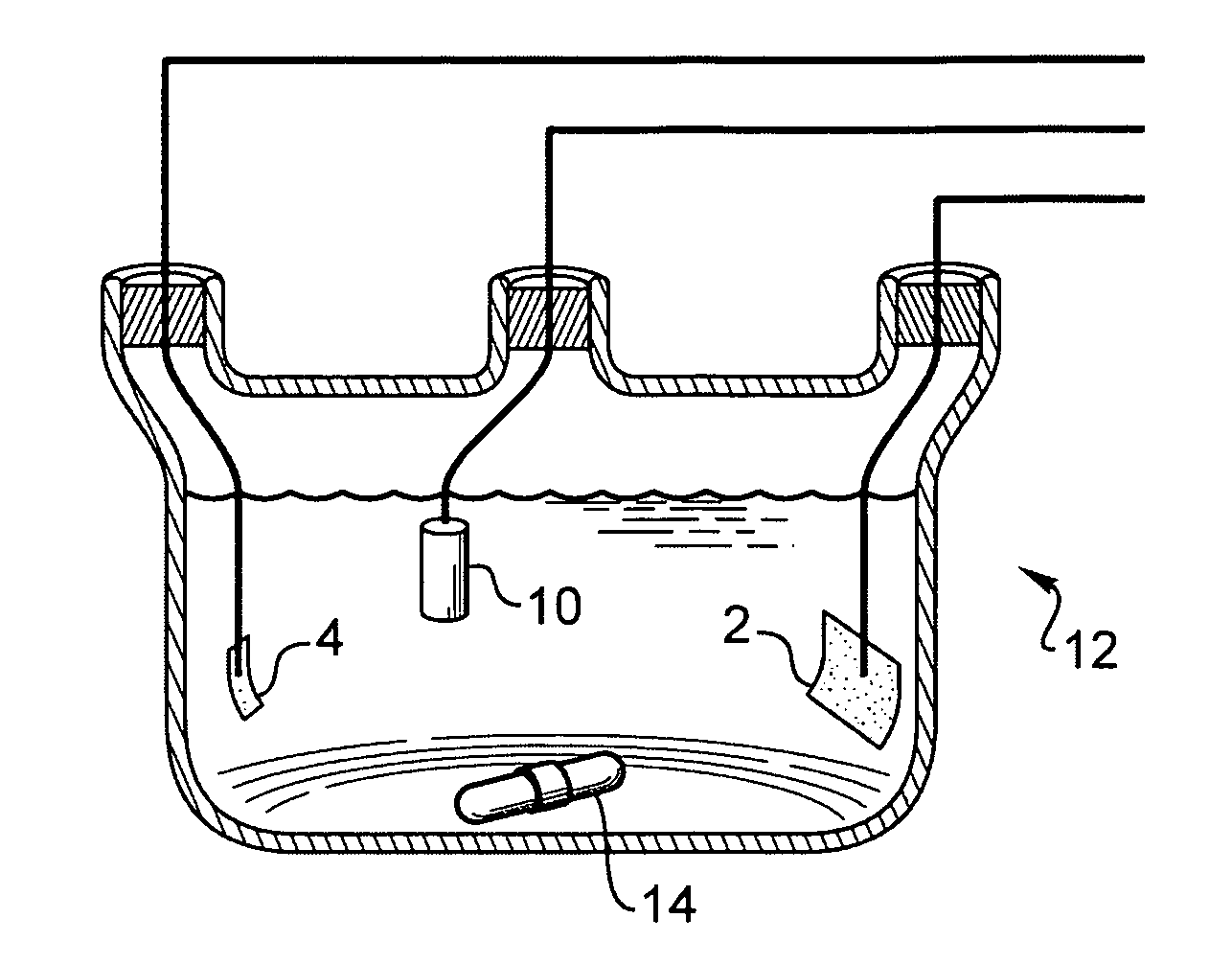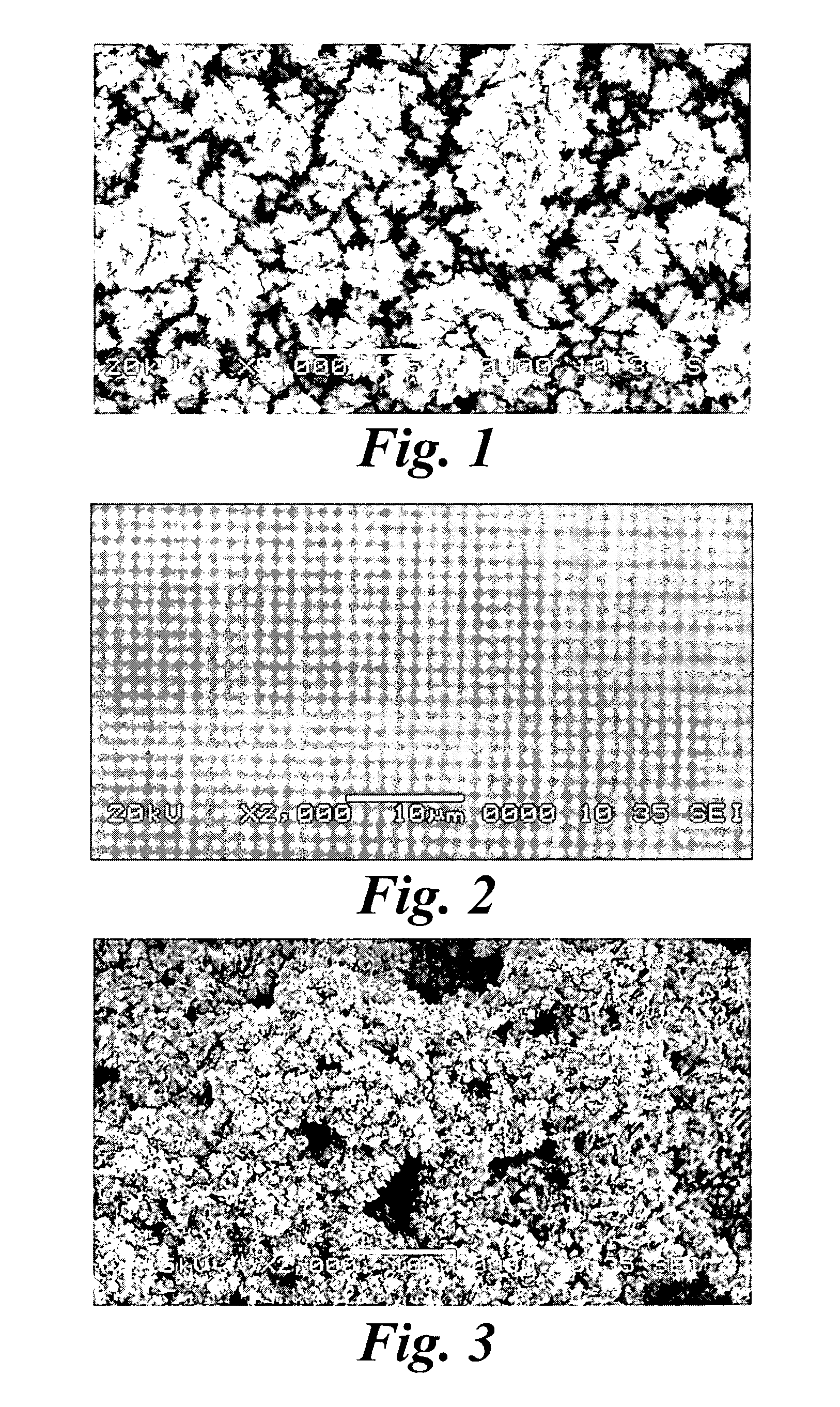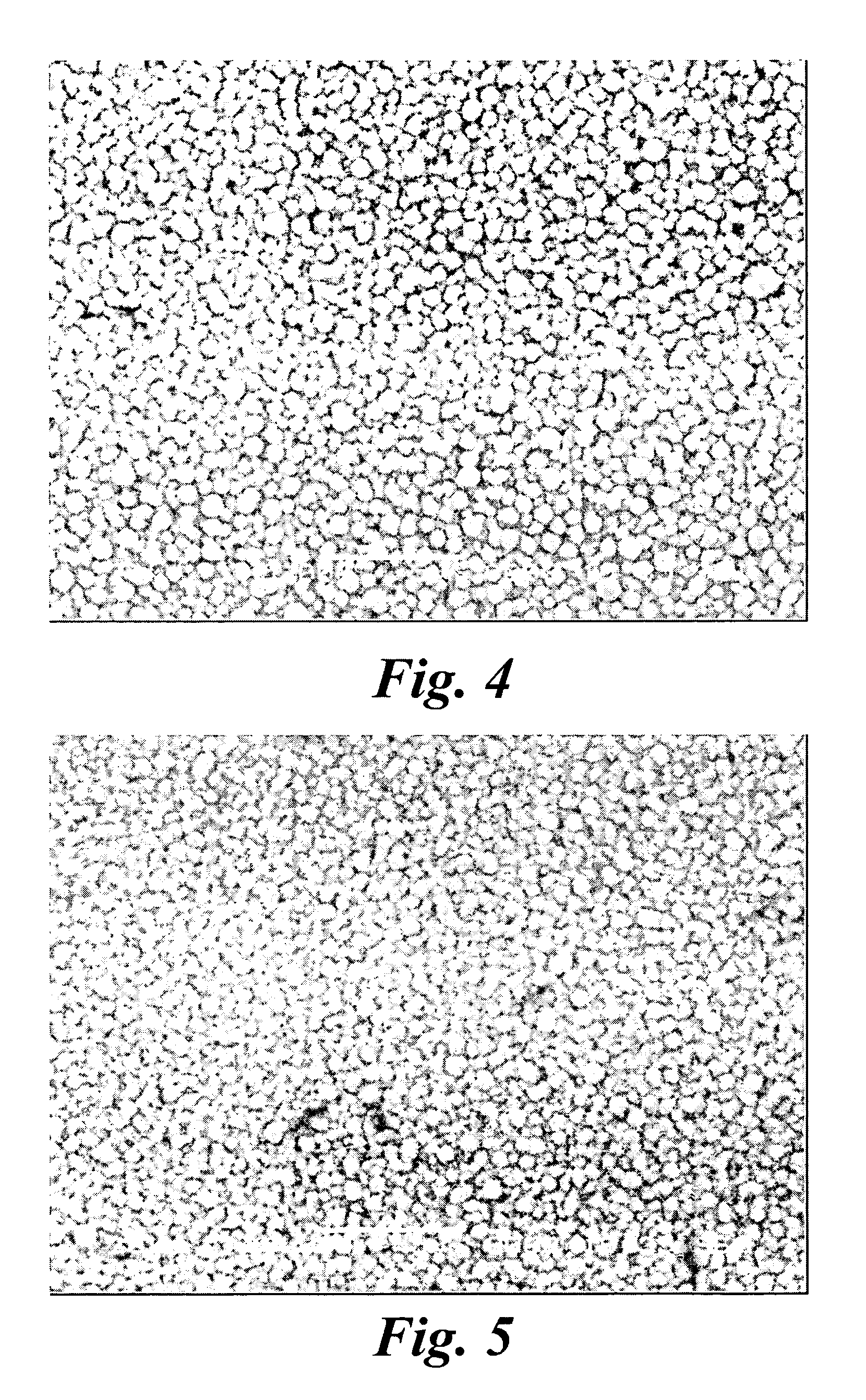Platinum electrode surface coating and method for manufacturing the same
a technology of platinum electrodes and surface coatings, applied in the field of platinum electrode surface coatings, can solve the problems of weak structural and physical strength of platinum black, degrading the electrode, damaging the tissue, etc., and achieves the effects of increasing surface area, sufficient physical and structural strength, and enhancing the ability to transfer charg
- Summary
- Abstract
- Description
- Claims
- Application Information
AI Technical Summary
Benefits of technology
Problems solved by technology
Method used
Image
Examples
example 1
Electroplating Platinum on a Conductive Substrate Platinum Plating Solution Preparation
[0070] 0.3 g sodium dihydrogen phosphate (NaH2PO4) and 6.03 g disodium hydrogen phosphate (Na2HPO4) [Fluka] were dissolved in 100 ml deionized water, and stirred by magnetic stirring for 30 minutes. The concentrations for NaH2PO4 and Na2HPO4 were 25 mM and 425 mM. Then 0.5 g of Platinum chloride (PtCl4) [Alfa Aesar] was added to the phosphate solution to form the platinum salt concentrations of 15 mM. The solution was then stirred for 30 minutes. Different concentrations of (PtCl4) were used in the experiments and the range of Pt salt concentrations was from 3 to 30 mM. The pH of the solution was measured at 7.9. The color of the solution was amber. The solution was deaerated before the plating process by bubbling nitrogen through the solution.
Preparation of the Substrate
[0071] A thin-film platinum polyimide array was used for platinum plating. The array included 16 electrodes with 200 μm thin-...
example 2
Electroplating Platinum on a Conductive Substrate Platinum Plating Solution Preparation
[0077] 0.3 g sodium dihydrogen phosphate (NaH2PO4) and 6.03 g disodium hydrogen phosphate (Na2HPO4) [Fluka] were dissolved in 100 ml deionized water, and stirred by magnetic stirring for 30 minutes. The concentrations for NaH2PO4 and Na2HPO4 were 25 mM and 425 mM. Then 0.5 g of Platinum chloride (PtCl4) [Alfa Aesar] was added to the phosphate solution to form the platinum salt concentrations of 15 mM. The solution was then stirred for 30 minutes and filtered to black solids. Different concentrations of (PtCl4) were used in the experiments and the range of Pt salt concentrations was from 3 to 30 mM. The pH of the solution was measured at 7.9. The color of the solution was amber. The solution was deaerated before the plating process by bubbling nitrogen through the solution.
Preparation of the Substrate
[0078] A thin-film platinum polyimide array was used for platinum plating. The array included 16...
example 3
Electroplating Platinum Gray on a Conductive Substrate
[0084] A platinum polyimide electrode array having 16 electrodes (FIG. 14) having a diameter of 200 μm platinum disc on the array was cleaned electrochemically in 0.5 M H2SO4. The electrode array was placed in an electroplating cell containing a plating solution having a concentration 20 mM ammonium hexachloroplatinate, 0.025 M sodium dihydrogen phosphate and 0.425 M disodium hydrogen phosphate. The voltage of −0.65 V was terminated after 30 minutes. The electrode was thoroughly rinsed in deionized water. The electrochemical capacitance of the electrode with the surface coating of platinum gray was 1200 μF / cm2, measured in a 10 mM phosphate buffered saline solution. The charge / charge density and average plating current / current density were calculated by integrating the area under the plating current vs. the time curve. The optimal voltage drop across the electrodes for producing platinum gray was from −0.55 to −0.75 Volts vs. Ag...
PUM
| Property | Measurement | Unit |
|---|---|---|
| thickness | aaaaa | aaaaa |
| thickness | aaaaa | aaaaa |
| thickness | aaaaa | aaaaa |
Abstract
Description
Claims
Application Information
 Login to View More
Login to View More - R&D
- Intellectual Property
- Life Sciences
- Materials
- Tech Scout
- Unparalleled Data Quality
- Higher Quality Content
- 60% Fewer Hallucinations
Browse by: Latest US Patents, China's latest patents, Technical Efficacy Thesaurus, Application Domain, Technology Topic, Popular Technical Reports.
© 2025 PatSnap. All rights reserved.Legal|Privacy policy|Modern Slavery Act Transparency Statement|Sitemap|About US| Contact US: help@patsnap.com



